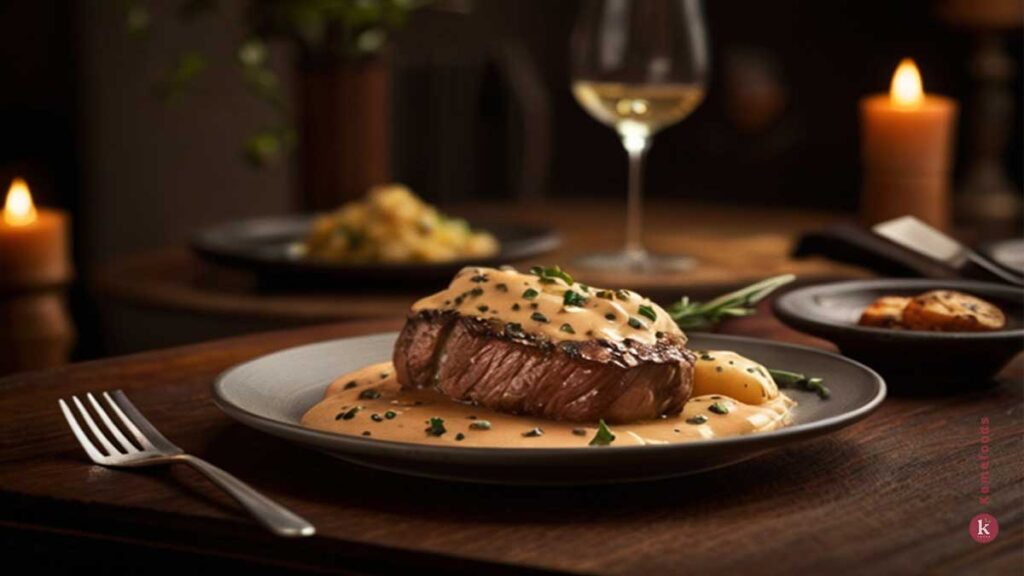Discover the rich history and culinary delight of Steak Diane, a dish that epitomizes gourmet sophistication. This classic recipe, known for its succulent beef tenderloin and flamboyant sauce, has graced tables with a blend of tradition and flair. In this exploration, we delve into the origins, essential ingredients, and the art of preparing Steak Diane, ensuring your next dining experience is nothing short of spectacular.
A Culinary Journey Through Time
Steak Diane is more than just a meal; it’s a piece of culinary history. Its roots are as complex and diverse as the flavors it boasts. While many claim the dish’s origins, the most compelling stories link it to New York City’s high society in the mid-20th century. The dish, named after the Roman goddess of the hunt, Diana, was a symbol of elegance and sophistication.
Intrigued by its storied past? Discover more about the history of classic French dishes and how Steak Diane became a symbol of fine dining.
Crafting the Perfect Steak Diane
The key to mastering Steak Diane lies in its ingredients and preparation. At its heart are:
- Beef tenderloin, pounded thin for tenderness
- A rich sauce of cognac, heavy cream, Dijon mustard, and Worcestershire sauce
- A flamboyant finish with flambéed cognac, igniting not just the sauce but the diner’s imagination
Each element plays a crucial role, from the quality of the beef to the precise flambé technique, ensuring a dish that’s both visually and gastronomically pleasing.
For a deep dive into cooking with cognac and enhancing flavors, check out this guide to cooking with Cognac.
Serving and Pairing Suggestions
Steak Diane is not just about the steak but also about the accompaniments and wine pairings that elevate the entire dining experience. Consider serving it with:
- Lightly sautéed green beans or asparagus
- Creamy mashed potatoes or a delicate potato gratin
- A bold Cabernet Sauvignon or a velvety Merlot to complement the rich sauce
FAQs:
- What is the best cut of steak for Steak Diane?
- Beef tenderloin is traditionally used for its tenderness and mild flavor, which pairs beautifully with the robust sauce.
- Can sauce be made ahead of time?
- Yes, though best served fresh, the sauce can be gently reheated, being careful not to let it split.
- How to reheat without losing its flavor?
- Reheat it slowly on a low heat, covered, to retain moisture and flavor.
Steak Diane remains a testament to culinary artistry, blending rich history with exquisite flavors. Whether for a special occasion or a gourmet home-cooked meal, it promises an unforgettable dining experience. Explore, experiment, and most importantly, enjoy the process of recreating this timeless dish.
- (no title)
- Chicken Salad
- Tardive Salad
- Rose Shrimp Recipe
- Steak Diane

- Valentine’s Day Recipes: A Love-Filled Menu
- ACL Recipes Peru
- Authentic ACL Recipes from Peru: A Culinary Journey
- Annie’s Recipes: The Secret to Sweet Amish Pickles
- Beef Liver and Onions Recipe
- Char Siu Chicken
- Beef Au Jus : A Culinary Delight
- Beef au jus recipe : A Culinary Delight
- Au Jus Recipe
- What Makes It a Fajita?
- 10 Student Recipes for Easy and Budget-Friendly Meals
- What is a Good Meal for a Diabetic? A Comprehensive Guide
- Understanding Food Guide Basics
- Understanding Healthy Food Choices
- Peanut Butter Smoothie Bowl: A Nutritious Indulgence
- Light Chicken Potpie
- Quick and Easy Dinner Recipes: Your Solution for Busy Evenings
- No Bake Oreo Cheesecake: A Delightful Dessert for All Occasions
- The Delightful World of Garlic Flatbreads
- Easiest Baking Recipes for Beginners
- Homemade Salsa for Canning
- The Ultimate Guide to Creating
